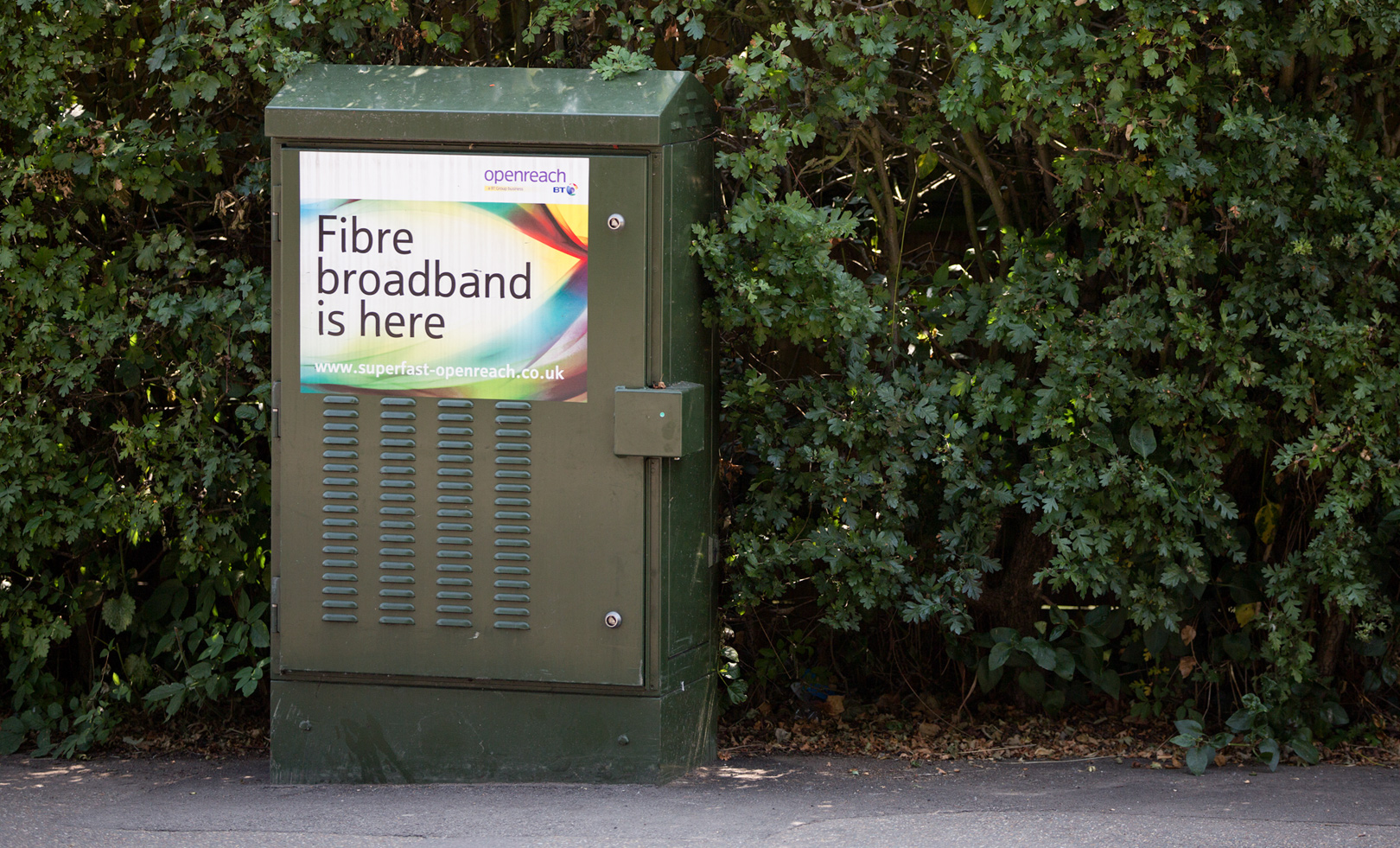In a letter in the Financial Times this week SKY, Vodafone and TalkTalk signed a letter asking Ofcom, the Competition and Markets Authority to investigate BT for their poor delivery of internet access service. In response yesterday, BT has talked about aims to improve speeds to a minimum of 5 – 10 Mb/s, extend ‘fibre broadband’ (read fibre to the cabinet) to more than 95% of the country and increase speeds past 300 Mb/s for 10 million homes.
Surely this was the inevitable outcome from the government supporting BT as the primary partner in rolling out ‘superfast’ (I still don’t know what that really means) broadband across the country.
I have written before about moving into a brand new flat in 2014 which was still wired by BT using copper cables, instead of a future proof technology such as fibre which could support potential speeds of over 100 Gb/s. As it is, the technology BT has invested in, Fibre to the Cabinet, ensures we are going to be dependent on phone lines, copper and technical issues for decades to come. So while I appreciate BT’s view to maximise on their existing footprint, as any self-respecting business would probably do to maximise shareholder return, it has proved to be a costly mistake for the rest of the industry and consumers.
The other knock-on effect by handing BT so much responsibility has been the enormity of the task. The business continually has to invest in new staff and equipment to get anywhere near to delivering against the targets put upon it. No wonder the rest of the industry is frustrated. One such issue was recently highlighted to me by a neighbour who said to me that he had finally got ‘fibre broadband’ as it had just been enabled in our building.
“No”, I replied, it has been in our building since January 2014 when BT first enabled the local cabinet. What has transpired is that while our building has been enabled, the actual cabinet quickly ran out of capacity and it has taken over a year to deliver more capacity to it so that the rest of the residents could receive the service.
So is that due to BT being overstretched, or possibly a lack of hardware available? Or cynically could you read into this that actually on paper, at least, our building has been enabled and so therefore met a target, even if not many people can actually order it.
The same could be said where I live in the country. For the past nine months, I have been inspecting a shiny new cabinet that has appeared at the end of my drive. ‘Fibre Broadband is coming’ said a BT engineer to me who came to fix my broken phone line. Maybe, but at the moment all I can see is an empty box in preparation for it. Are we going to get the same issue in our village, that only a few will be able to enjoy it until it reaches capacity when it is finally enabled? And has the very presence of the cabinet thwarted any plan from an alternative fibre provider from investing into connecting up our village?
SKY and TalkTalk through their partnership with CityFibre have already started to look at rolling out Fibre to the Home (proper Fibre Broadband) and I believe will be looking to bring up to 70,000 homes online in York. Vodafone has a national fibre network that they own through their acquisition of Cable & Wireless. What Ofcom need to do is allow BT to do what they do best and enable everyone else to build and develop their own technologies to the home. They need to ensure that we have a level playing field; already other providers such as City Fibre, IFNL and Gigaclear have managed to build their own fibre networks on private investment. We can then let history decide if BT’s focus on a copper phone network was the right choice.



Leave a Reply